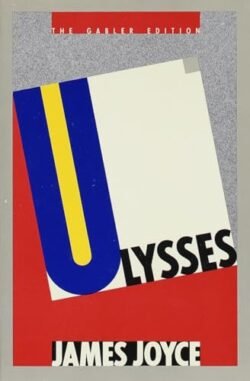“Ulysses” by James Joyce, specifically the Gabler Edition published in 1986, is considered one of the most important works of modernist literature. The novel is known for its innovative use of stream-of-consciousness narrative techniques, intricate character development, and deep exploration of the human psyche. Set in Dublin on a single day, June 16, 1904, “Ulysses” follows the journeys of its three main characters—Leopold Bloom, Stephen Dedalus, and Molly Bloom—as their paths intersect and diverge across the city, providing a complex, multifaceted portrait of life in early 20th-century Dublin.
The Gabler Edition, edited by Hans Walter Gabler and others, sought to correct thousands of textual errors found in previous editions, based on Joyce’s manuscripts, proofs, and printed editions. This critical edition has sparked both acclaim and debate among scholars and readers for its attempts to produce the most accurate text of Joyce’s notoriously complex and allusive novel.
Character Analysis
- Leopold Bloom: Leopold Bloom, a Jewish advertising canvasser, is portrayed as an everyman with deep internal monologues that reveal his observations, memories, and inner struggles. His wanderings through Dublin reflect his search for identity, belonging, and understanding in a changing world.
- Stephen Dedalus: Stephen Dedalus, first introduced in Joyce's "A Portrait of the Artist as a Young Man," is a young artist struggling with issues of nationalism, religion, and artistic freedom. His intellectual journey throughout the day mirrors his quest for self-realization and independence.
- Molly Bloom: Molly Bloom, Leopold's wife, is a complex character whose thoughts close the novel in a famous, unpunctuated stream-of-consciousness soliloquy. Her reflections provide insights into her personality, her relationship with Bloom, and her desires, concluding the novel on a note of affirmation and life's continuance.
Themes and Analysis
- Identity and Alienation: "Ulysses" explores themes of identity, alienation, and the search for meaning in the modern world, delving into the personal and cultural forces that shape individual lives.
- Stream of Consciousness: Joyce's use of stream-of-consciousness narrative techniques revolutionized the novel form, capturing the flow of characters' thoughts and perceptions in a way that mimics the complexity of human consciousness.
- Mythical Parallels: The novel draws extensive parallels with Homer's "Odyssey," reinterpreting classical myths within the context of contemporary life and highlighting the universality of human experiences.
“Ulysses” remains a cornerstone of literary modernism, celebrated for its linguistic inventiveness, psychological depth, and portrayal of the human condition. The Gabler Edition has played a significant role in Joyce studies by providing a text that aims to be as close as possible to Joyce’s intentions. Despite its complexity and the challenges it presents to readers, “Ulysses” is a rewarding exploration of life, art, and the power of language, offering endless possibilities for interpretation and appreciation.
If the summary caught your interest,
Consider reading the full book on AbeBooks.
Explore this book on AbeBooks
